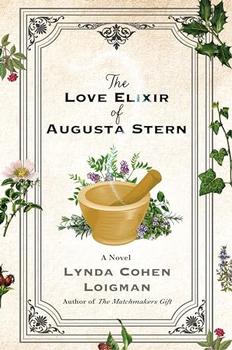Summary | Excerpt | Reviews | Beyond the Book | Read-Alikes | Genres & Themes | Author Bio

This article relates to Orange World and Other Stories
 Korčula is a Croatian island in the Adriatic Sea off the Dalmation coast, and the setting of Karen Russell's story "Black Corfu" from her story collection Orange World. It's the second most populated island in the Adriatic (after Krk), and it has a long, storied history of being occupied by various superpowers reaching back to the ancient world.
Korčula is a Croatian island in the Adriatic Sea off the Dalmation coast, and the setting of Karen Russell's story "Black Corfu" from her story collection Orange World. It's the second most populated island in the Adriatic (after Krk), and it has a long, storied history of being occupied by various superpowers reaching back to the ancient world.
The earliest known inhabitants of Korčula were the Illyrians, a group of Indo-European tribes who lived across the western Balkans and subsisted on farming and fishing. The island was colonized by Greeks in the 6th century BC, who called it Black Corfu—Black for its dense woods, and Corfu for their island of origin. Greeks and Illyrians coexisted in separate areas of the island, and the people lived in relative peace until 220 BC, when brutal war broke out between the Illyrians and the Romans over trade disputes. The latter proved victorious, and Korčula fell under the rule of Rome.
In the 9th century, ethnically Slavic people moved into the region, the ancestors of the modern-day Croatians, but their control of the island was short lived. The Dalmatian coast was invaded by the Venetians in the 10th century, and remained under the rule of Venice into the 18th century, despite the region coming under frequent attack by the Ottomans. Venetian explorer Marco Polo was born on Korčula in 1254. The Venetian state fell in 1797, at which point Korčula became part of the Austrian Empire. It was then invaded by the French in 1806. French rule lasted only seven years, as the British captured the island in 1813, only to cede it to the Austrians in the 1815 Congress of Vienna (the peace conference held after the fall of Napoleon).
After World War I, when the Austrian Empire dissolved, Korčula became territory of the Kingdom of the Serbs, Croats and Slovenes, which itself became the Kingdom of Yugoslavia in 1929. Finally, in 1991, it became part of the Republic of Croatia, now an independent country.
Because of its long, fascinating history, Korčula now has a thriving tourist industry. One of its principal attractions is Saint Mark's Cathedral, a stunning merger of Gothic, Romanesque and Baroque architectural styles built and developed over three centuries and completed in the early 15th century. Just south of the cathedral lies the Abbey Treasury, constructed in the 17th century, which holds a sizable collection of 12th-15th century manuscripts, art and artifacts. Across the street one can visit the Town Museum, a former palatial residence that now houses ceramic pieces excavated from the sites of Greek and Roman shipwrecks, and a 4th century Greek tablet from Lumbarda, among other treasures. Korčula features two attractions devoted to its most famous native son, the Marco Polo Exhibition, an interactive museum opened in 2012, and Marco Polo House, which is a 17th century structure (supposedly) built on the site of the explorer's birth.
The island is also known for its annual Sword Dance Festival, which features performers in elaborate costumes engaging in mock dance battles. The sword dancing tradition in Korčula dates back to the 17th century, but it is based on a 15th century Spanish custom; the dance is believed to have been performed as a ceremony of protest against Moorish occupation in Spain. Tourists can also visit the beaches and historical sites on a mountain bike tour, or venture from Korčula to nearby Hvar Island on a yacht excursion.
Picture of Korčula, courtesy of Wikipedia.
Filed under Places, Cultures & Identities
![]() This "beyond the book article" relates to Orange World and Other Stories. It originally ran in June 2019 and has been updated for the
May 2020 paperback edition.
Go to magazine.
This "beyond the book article" relates to Orange World and Other Stories. It originally ran in June 2019 and has been updated for the
May 2020 paperback edition.
Go to magazine.




The low brow and the high brow
Click Here to find out who said this, as well as discovering other famous literary quotes!
Your guide toexceptional books
BookBrowse seeks out and recommends the best in contemporary fiction and nonfiction—books that not only engage and entertain but also deepen our understanding of ourselves and the world around us.